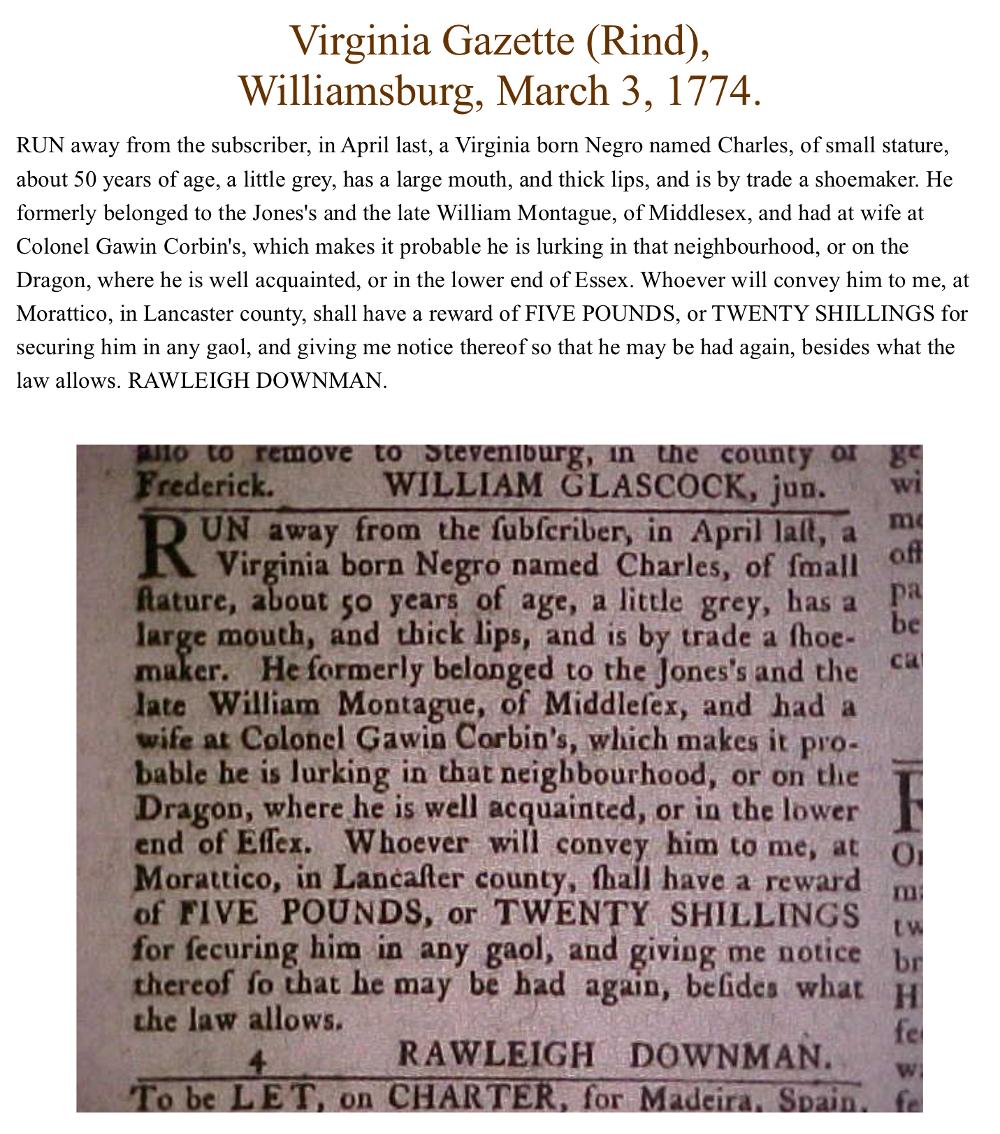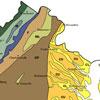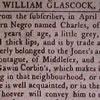Newspaper advertisements for runaway slaves were common in newspapers during the 17th and 18th centuries, as slave owners sought to recapture escaped slaves. This particular ad appeared in the Virginia Gazette in 1774 and advertised a reward for the capture of Charles, 50 years old and born in Virginia. As you read this ad – a stark reminder of the degree to which slavery was entrenched in Virginia society and central to colonial America’s economy – also consider the ways in which geography factored into slaves’ lives.
A slave’s knowledge of the surrounding geography could play a significant role in his or her chances of successfully escaping. Most slaves would not have had the opportunity to learn about the area outside of their masters’ farms, but those that did – slaves who worked a trade in a nearby town, for example – had a much better chance of escaping. Similarly, as this ad suggests, a limited knowledge of geography could mean that a slave’s owner had a better chance of apprehending the runaway because it made potential hiding places more obvious.
The geography of slavery changed over time, as well. Tobacco farms in Virginia wore out quickly, and as farmers moved west in search of new land, they took their slaves with them. The 1793 invention of the cotton gin made cotton a valuable cash crop for states south of Virginia and significantly increased their demand for slaves. The cotton gin, coupled with Congress’ decision to outlaw the international slave trade in 1808, transformed Virginia into a major slave trafficking site.
Source: Rawleigh Downman, “Virginia Gazette (Rind),” Gazette (Williamsburg, VA, March 3, 1774), in The Geography of Slavery, accessed September 17, 2011.













